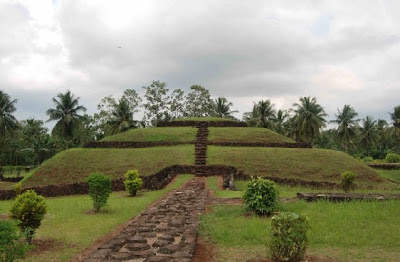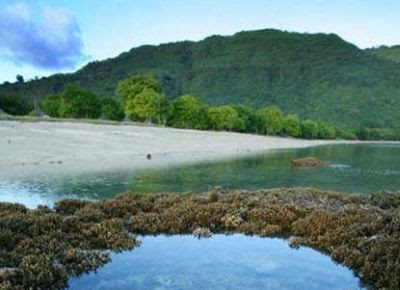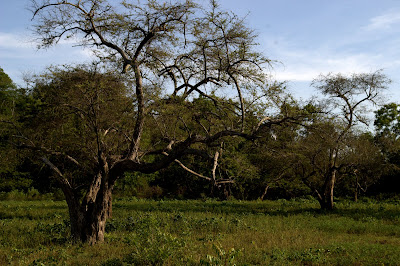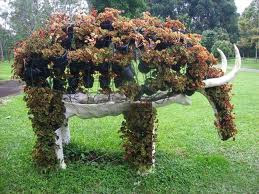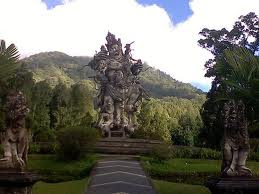Home » Posts filed under Park
Alif Stone Park is a rocky parks located in the seaside Sepempang village, District of Eastern Bunguran, Natuna Regency, Riau Islands province. An area of 3 hectares of it to save thousands of beautiful rocks, combined with the beauty and clarity of the beach that makes the visitor can not forget.
Natuna is one of the districts in Riau Islands province, there are many natural attractions. One attraction worth visiting is the Alif Stone Park.
As the name implies, Alif Stone Park consists than thousands of large and small rocks that make up a stunning natural parks for you who like to enjoy the beaches.
Alif Stone Park is not much different from the general attraction of beaches in Natuna, it's just that this place is easy to reach. In addition the area is still included cormap region, where people are mainly fishermen keep the existence of coral reefs and sea biota existing without sustaining damage.
For reach the location is not difficult because it only less than 3 kilometers from capital city of Natuna ie Ranai or about 15 minutes away. Location is also easily accessible by all transportation as road infrastructure is available.
When we arrived at the Alif Stone Park, a beautiful landscape welcoming and will make anyone who visited Alif Stone Park to be amazed by the views of large stones that are relics of the ancient on the beach. And we can enjoy the beautiful blue ocean views or relax by standing on the stones are very large, Hmmm ... is an unforgettable experience for anyone visiting the Alif Stone Park.
Chunks of boulders until now a mystery of its own for the Natuna people, due to how the stones are giant can be on the beach with an area of less than about 3 hectares. Name of Alif Stone Park is taken from one stone this area, standing on top of another stone like the letter "Alif" in Arabic. Therefore, until this present moment in the area called by the Alif Stone Park.
Alif Stone Park until this present moment is one of the favorites for the Natuna people to spend leisure time and enjoy the beautiful waterfront. Alif Stone Park is also one of the attractive tourist destination to visit when we are in Natuna.
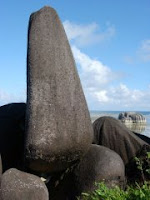 Alif Stone Park is the most beautiful stone park attractions in Indonesia and is one of the mainstay attractions in Natuna. This palce is a natural wonders because it has megalitith primeval rocks and stones.
Alif Stone Park is the most beautiful stone park attractions in Indonesia and is one of the mainstay attractions in Natuna. This palce is a natural wonders because it has megalitith primeval rocks and stones.
If you visit in the Natuna do not forget to immortalize themselves by photo among thousands of boulders that are in Natuna. This giant boulder save the panorama is breathtaking and amazing to be enjoyed.
In stone park attractions alif you can scenery, especially the clear sea water with views of the Senoa Island and Sindu Stone is located not far than the venue. For current attractions are free to visit anytime.
Natuna is one of the districts in Riau Islands province, there are many natural attractions. One attraction worth visiting is the Alif Stone Park.
As the name implies, Alif Stone Park consists than thousands of large and small rocks that make up a stunning natural parks for you who like to enjoy the beaches.
Alif Stone Park is not much different from the general attraction of beaches in Natuna, it's just that this place is easy to reach. In addition the area is still included cormap region, where people are mainly fishermen keep the existence of coral reefs and sea biota existing without sustaining damage.
For reach the location is not difficult because it only less than 3 kilometers from capital city of Natuna ie Ranai or about 15 minutes away. Location is also easily accessible by all transportation as road infrastructure is available.
When we arrived at the Alif Stone Park, a beautiful landscape welcoming and will make anyone who visited Alif Stone Park to be amazed by the views of large stones that are relics of the ancient on the beach. And we can enjoy the beautiful blue ocean views or relax by standing on the stones are very large, Hmmm ... is an unforgettable experience for anyone visiting the Alif Stone Park.
Chunks of boulders until now a mystery of its own for the Natuna people, due to how the stones are giant can be on the beach with an area of less than about 3 hectares. Name of Alif Stone Park is taken from one stone this area, standing on top of another stone like the letter "Alif" in Arabic. Therefore, until this present moment in the area called by the Alif Stone Park.
Alif Stone Park until this present moment is one of the favorites for the Natuna people to spend leisure time and enjoy the beautiful waterfront. Alif Stone Park is also one of the attractive tourist destination to visit when we are in Natuna.
 Alif Stone Park is the most beautiful stone park attractions in Indonesia and is one of the mainstay attractions in Natuna. This palce is a natural wonders because it has megalitith primeval rocks and stones.
Alif Stone Park is the most beautiful stone park attractions in Indonesia and is one of the mainstay attractions in Natuna. This palce is a natural wonders because it has megalitith primeval rocks and stones.
If you visit in the Natuna do not forget to immortalize themselves by photo among thousands of boulders that are in Natuna. This giant boulder save the panorama is breathtaking and amazing to be enjoyed.
In stone park attractions alif you can scenery, especially the clear sea water with views of the Senoa Island and Sindu Stone is located not far than the venue. For current attractions are free to visit anytime.
National Park Rawa Aopa Watumohai is a representative type of low mountain rain forest ecosystem, mangroves, coastal forests, savanna, and freshwater swamp forest in Sulawesi.
Savanna vegetation in this park has a characteristic and uniqueness, due to an association between the prairie with plants agel, palm and bamboo thorns, bushes and plants are also along the rivers that flow in the savanna.
 |
| Rawa Aopa - Sulawesi |
Diversity of plants in this region is very prominent in the least recorded 89 families, 257 genera and 323 species.
This area is also a habitat for various bird species, 155 bird species recorded in it, including 32 species classified as endangered and 37 species classified as endemic.
In this park, you can do hiking and camping in Mount Watumohai - Mendoke, boating, fishing and bird watching in Rawa Aopa, exploring the forest and observe wildlife.
You can also explore the mangrove coast Lanowulu, safari, watching the deer that live in the wild, and enjoy the savanna in Lanowulu - Langkowala. Which is enjoying a pretty spectacular Waterfall Pinanggosi with roaring sound of water falling from a height of 30 meters.
Enjoy the wide expanse of swamp with a background cluster of charming mountains. So far, most visitors to this place was that the researchers. But that does not mean tourists are prohibited from visiting the region.
Mount Leuser National Park is one of the natural resources deserve the pride of Indonesia. Mount Leuser National Park is a nature reserve on the border of national park status of Nanggroe Aceh Darussalam, North Sumatra. This national park takes its name from the towering Mount Leuser with a height of 3404 meters above sea level in Nanggroe Aceh Darussalam. This national park covers the natural ecosystems of the coast to high mountains covered by dense forests typical of tropical rain.
 |
| Mount Leuser National Park |
Mount Leuser National Park is a representative type of coastal forest ecosystems, and tropical rain forest lowlands to the mountains.
Mount Leuser forest is very dense, typical of coastal forest and tropical rain forests. In it there are several rivers, lakes, hot springs, valleys, and waterfalls. Ecosystems are very beautiful and diverse landscape that includes the plains to the mountains. There are a variety of endangered species are protected, such as jungle cats, tigers, hornbills, orangutans, gibbons, snakes, butterflies, birds, Sumatran elephant, Sumatran rhinoceros, goat forest, and sambar deer. In addition, there are plants strangler (fig) and other rare plants, such as the giant flower "Rhizanthes zippelnii" in diameter 1.5 meters, Raflesia flowers, and leaves a giant umbrella.
In the Mount Leuser National Park area tends to be original and there are types of trees of high economic value and can still be found Orangutans and other primate species as well as a variety of birds.
Mount Leuser National Park
Bantimurung Karst Mountains - South Sulawesi
Identical to the known karst limestone, barren, hot, dry and craggy rocks tend to robustness white. Karst area Bantimurung Bulusaraung National Park has long been known as the limestone mountains that kept many potential range of distinctive and unique. These characteristics would have been able to invite a variety of disciplines and among the parties to maintain sustainability, manage and use for various purposes.
 |
| Bantimurung Karst Mountains - South Sulawesi |
One area that many tourists are attracted Bantimurung Natural Park which is located in the Maros district of South Sulawesi Province. Having a beautiful natural potential, as a place of cultural tourism, and is a habitat for more than 84 species of butterfly, which was dubbed the Kingdom of Butterflies.
Bantimurung National Park has the most beautiful natural scenery. Because in this park, there are sources of water that never dry. So that various types of plants can survive in the long dry season.
Enchantment Natural Park Bantimurung as natural assets owned by the South Sulawesi Province, precisely Maros National Park Bantimurung Bulusaraung. Potentials that exist both tirta tourism, biodiversity and beauty of the cliffs karstnya as nature tourism with a special interest needs to be kept and maintained its existence. While the potential is presumably still hidden and have not been identified, need to be dug and carried peneltian further as the material development of the next tour.
Kerinci Seblat National Park is located in 4 regions of the province of West Sumatra, Jambi, Bengkulu and South Sumatra. Most of the park is the South Bukit Barisan mountain range in central Sumatra island.
 |
| the National Park Kerinci Seblat |
In the history of its formation, this national park is the union of regions Inderapura Nature Reserve and Bukit Tapan, Wildlife Rawasa Huku Lakitan-Bukit Kayu dew and Gedang Seblat, protection forest and limited production forests surrounding the hydro-orologis functions which are vital to surrounding area.
Forest National Park, Kerinci Seblat has 4000 species of plants that is dominated by the family Dipterocarpaceae, with rare and endemic flora of the Kerinci pine (Pinus merkusii strain Kerinci), wood bloodsucker (Harpulia alborera), Rafflesia flower (Rafflesia arnoldi) and the carrion flower (Amorphophallus titanium and A. decussilvae).
Not less than 4000 types of flora (63 families) in areas dominated by the family Dipterocarpaceae, Leguminosae, Lauraceae, Myrtaceae, Bommacaceae, Moraceae, Anacardiaceae, Myristicaceae, Euphorbiaceae and Meliaceae. While at an altitude of 500 m - 2000 m above sea level. dominated by the families Fagaceae, Erycaceae and sub-alpine shrubs of Vaccinium and Rhododendron type.
Some typical types of vegetation in the Kerinci Seblat National Park, among others: Histiopteris insica (highest vascular plants) are on the wall of the crater of Mount Kerinci, various types of Nepenthes sp, Pinus mercusii strain Kerinci, Wood bloodsucker (Harpullia arborea), Flower Raflesia (Rafflesia arnoldi) , Agathis sp.




